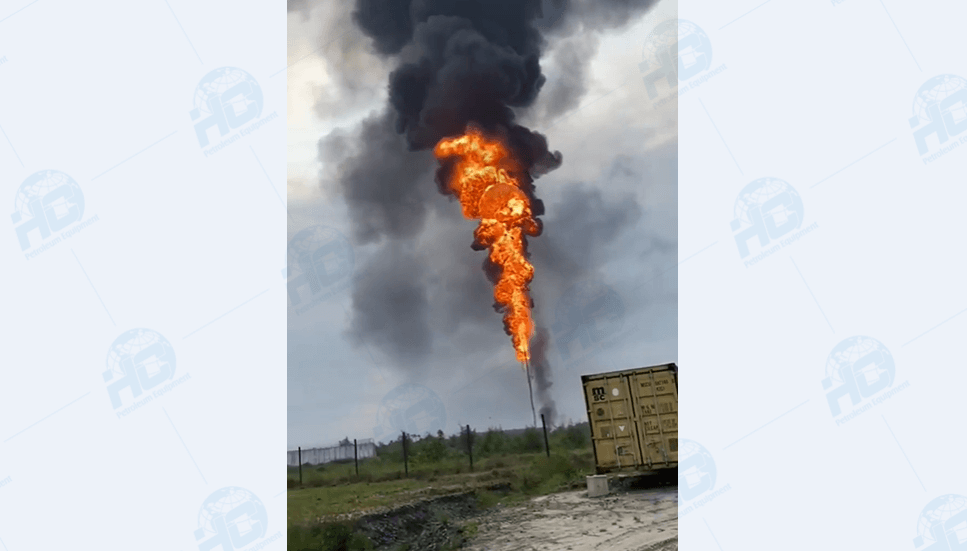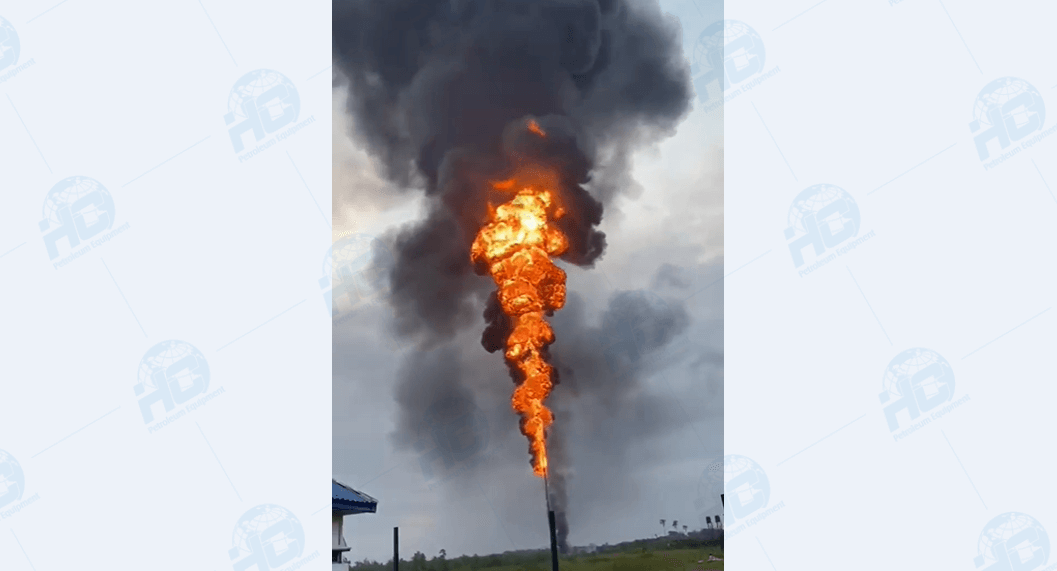Why Oil Burns in the Flare — And How HC Helps Prevent It
In the operation of oil and gas facilities, flaring is a necessary safety measure used to dispose of excess gas during production upsets, maintenance, or emergency situations. However, when oil or condensate starts burning in the flare — something that should never happen — it signals a deeper problem in the upstream process. This phenomenon, known as carryover, is often underestimated but can lead to serious economic losses, environmental violations, and operational risks. At HC, we have seen firsthand how improper separation design, undersized equipment, and poor system integration can turn valuable hydrocarbons into smoke — literally.

Carryover occurs when liquid hydrocarbons, such as crude oil or condensate, are not properly separated from the gas stream and are unintentionally carried through the gas line into the flare system. The result is not just wasted product, but a more unstable and smoky flare flame, increased emissions, and potential damage to the flare tip. From an operator’s standpoint, it represents a failure in both design and reliability.
The root causes of carryover usually begin with the separator — the vessel responsible for dividing the wellstream into oil, gas, and water. If the separator is undersized or the internal design does not provide adequate retention time — typically 3 to 5 minutes for gas-liquid disengagement — gas will exit too quickly, dragging fine liquid droplets along with it. This issue is further worsened when the knockout drum in the flare line is too small, poorly configured, or missing proper demisting internals. Rather than acting as a final safeguard, a weak knockout drum lets the remaining liquid slip through, allowing it to reach the flare.
Another overlooked factor is pipeline design. When gas velocities are high, especially in narrow or sharply-bent pipes, the flow becomes turbulent and can re-entrain separated droplets — a classic problem in systems where layout is driven by space constraints rather than process optimization. Without careful engineering, what seems like a minor piping decision can lead to chronic carryover and flaring issues.

Preventing carryover requires not just good equipment, but a thoughtful, system-wide approach. At HC, we start with the separator — ensuring proper vessel sizing, flow path control, and efficient internals to slow down the gas and allow for complete phase separation. Our knockout drums are designed with enough volume and high-performance demisters to effectively remove entrained liquids from gas, even under fluctuating flow conditions. In addition, we pay close attention to flare system piping — adjusting diameters, minimizing sharp turns, and evaluating velocities to reduce entrainment risks.
Beyond equipment supply, HC offers custom-engineered solutions tailored to the specific wellhead fluid characteristics and field conditions of each client. For operations in high-GOR fields, H2S environments, or low-pressure wells, we design separation systems that not only protect downstream equipment, but also maximize hydrocarbon recovery and reduce flaring-related losses. Our goal is not simply to build separators, but to create complete gas-liquid handling systems that protect your production value, meet environmental standards, and enhance operational safety.
When oil burns in the flare, you're losing more than just product — you're losing revenue, damaging infrastructure, and compromising environmental compliance. But with the right design, these losses are entirely preventable. HC is committed to helping operators eliminate unnecessary flaring of liquids by delivering high-efficiency separation and knockout systems, supported by deep engineering expertise and field-proven performance.
